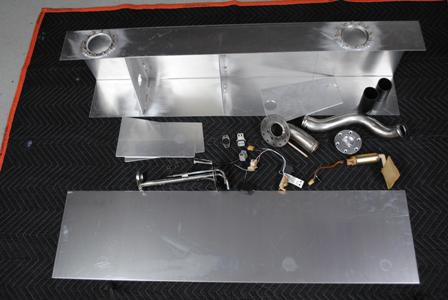
Visit our community sponsor

Thanks:
21

Likes:
218
-

Yes, I love Technology

The fuel lever senders are both in there - the left and right tank senders from my scrap yard doner. Each arm-wire was cut and reshaped so that the two work together. One arm "reads" the bottom half of the tank and the upper arm gets the 1/2 to Full range. Solves the 100 ohm requirement, gets full coverage of the tank in the bargain. Took a long time to figure out the mounting, swing for each float, etc. Bending and working the wires to the floats - not exactly easy to do and a mistake could mean another trip to "the yard".
The last sillyness of this pump/sender unit - it won't drop in the hole intact. Each sender has to be free from the metal frame, and inserted after the frame is in the hole, then screw the sender bracket to the metal frame working from above the opening. Can do but drop a screw = start over. I just happened to have some 10-32 PEM nuts in my junk boxes left, so they got pressed into the frame, at least I didn't have to fiddle with nuts along with the screws...

A view of the tank with a couple of the dividers, pump, slosh trap valve.

The FFR supplied fuel fill pipe got cut up and reshaped to fit the top of the tank instead of the lower back side. I decided to put a (rather small - gulp - it's what I had on hand) vent pipe along with it to help with slow fill problems many have discussed here. A second vent on the plumbing will go to the charcoal cannister/vent "circuit". Between the two I hope fill venting will be sufficient.
By the way, when pressure testing the whole assembly I learned the lovely fill cap from FFR will only hold about 1 to 1.5 PSI. Then again I think the ECM only runs the tank up to about 0.5 PSI when it is doing fuel system leak testing cycles. Also the little keeper pin on the back side of that fill cap has a small set-screw to keep it from falling out by accident, should you release the spring tension. The screw was loose on mine as received. Someone fiddling with the fuel cap while it is not installed could/would maybe loose that pin for you.

This didn't come in a box...

Making gaskets, from Fel-Pro 4 part sample pack (see later pix). Hobby brass tubing is always handy to have around. Use different sizes to do all sorts of interesting things sooner or later. 20T press is just a slight bit of overkill but makes punching the fiber-rubber sheet a whiz. The small fiber ring washers go under each of the bolt down ring's 10/32 nuts, just in case one of the swage/crimps should ever leak.

 Posting Permissions
Posting Permissions
- You may not post new threads
- You may not post replies
- You may not post attachments
- You may not edit your posts
-
Forum Rules

Visit our community sponsor






 Thanks:
Thanks:  Likes:
Likes: 








 Reply With Quote
Reply With Quote